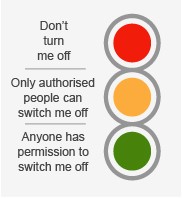Energy is often one of the biggest costs for businesses, you may be surprised how much energy your workplace wastes in a day without realising it. There are lots of technological ways to save energy but the simplest and most effective way for many businesses to save energy, is to change behaviour. We’ve put together 5 tips to get employees involved and engaged in energy saving in the workplace.
1. Get staff involved
Get everyone involved from the start, ask for suggestions ideas and opinions, challenge staff to come up with innovative ideas to save energy. Ask staff to review their own workstation or practices. You could appoint an energy champion, someone who is a good motivator will boost employee enthusiasm. How do they save energy at home? Some staff may have already adopted good energy saving practices and can share these and apply them to the workplace. Have a written energy policy and consider including energy saving responsibilities in job descriptions.
2. Tell them the benefits
If people understand why they are trying to save energy they are more likely to do it. Explain to your staff why you want to save energy. Don’t talk down to people though, try informal team meetings and use bite sized topics which people can relate to at a personal level. Explain the benefits of energy saving to the business – the cost savings, reducing the company’s carbon footprint, creating a healthier workplace. Remember that the benefits will be perceived in different ways – reducing carbon emissions may be important to some but not to others so you may need to use different angles. Publicising the company’s commitment and achievements also enhances the company’s reputation which may help the company win more work. And remember that encouraging people to save energy at home can have a knock-on effect on saving energy in the workplace.
3. Create marketing materials
Involve staff in creating an energy policy then follow up with reminders such as posters, displays on noticeboards, stickers on equipment for example a traffic light system on equipment: Red – don’t switch me off, Amber – ask permission to switch me off, Green – anyone can switch me off. Remember to change or rotate posters and displays periodically to keep them fresh.
Email is a good method of communication for staff who are more office based, but make these relevant and interesting, with practical tips and reminders. If possible use graphics such as a photograph or simple chart.
Get the conversation going by linking up with campaigns such as Big Energy Week (January), World Environment Day (June) or NI Environment week (September).

4. Run competitions or team projects
Set realistic targets, and if they are achieved make sure everyone knows and provide rewards appropriate to the structure of the business e.g. teams, departments, offices or individuals. Offering incentives and using healthy competitiveness of employees can encourage people to engage.
5. Communicate
Monitor the energy use and communicate the achievements to staff by using newsletters, notice boards or web blogs. If you’ve reduced your energy consumption, give your team a pat on the back! Remember to keep the momentum going, encourage new ideas, change the messages according to whats working and whats not and ask staff for feedback. Most importantly, monitor the effectiveness of your energy awareness campaigns.
Taking it further
Think about energy use when buying new equipment, could you carry out an energy audit on your own building? Could you consider renewable energy?
Action Renewables provide comprehensive services in energy auditing, management and renewable energy feasibility. To find out more and see examples of our work click here.


